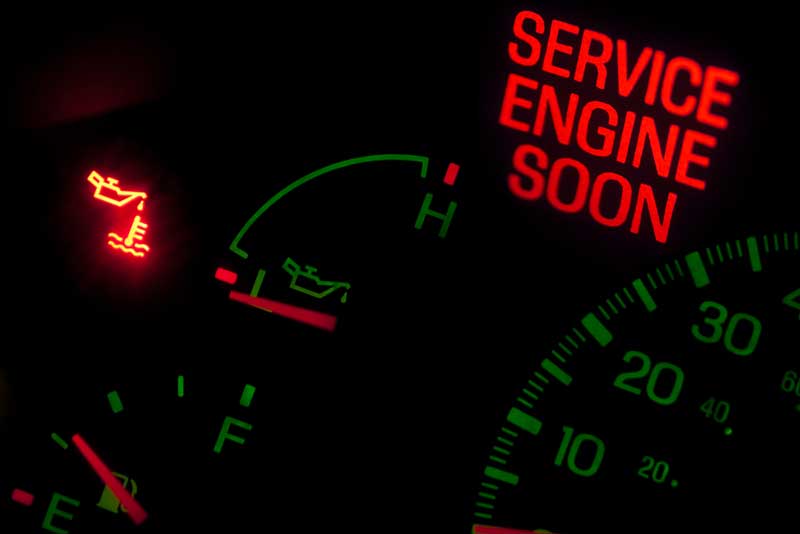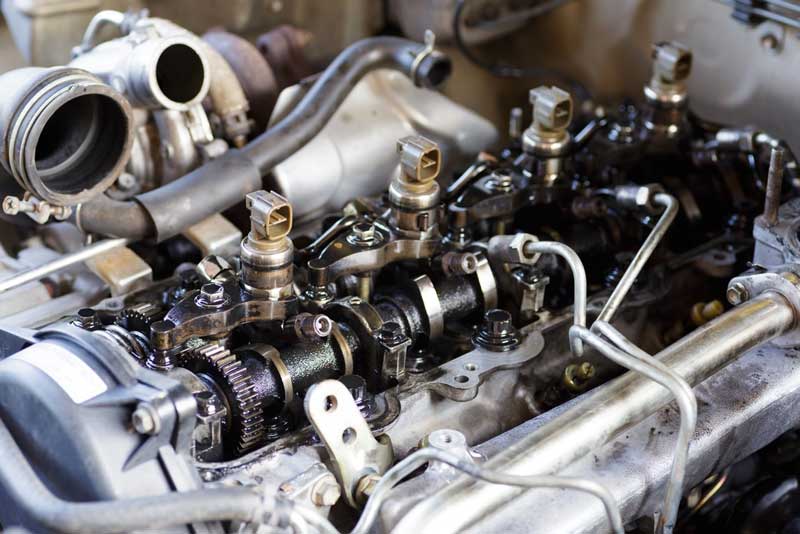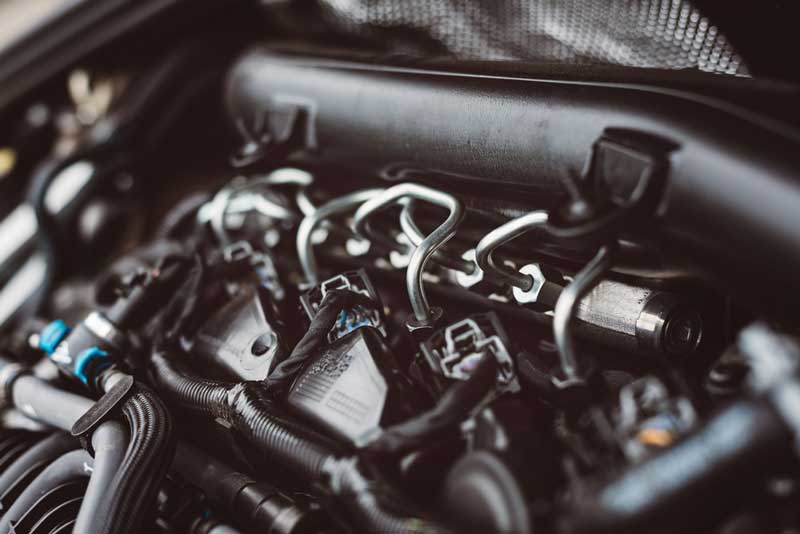Where is the Fuel Rail Pressure Sensor located? Does its location have anything to do with fuel consumption rate?
Every car needs an engine to function. Diesel or petrol fuel is used today in internal combustion engines. The fuel rail pressure sensor, sometimes known as a fuel pressure sensor, is a feature of these engines.
It is a component of a vehicle’s fuel system which is intended to keep track of the gasoline’s pressure within the rail. The ECU or Electronic Control Unit, which modifies the timing and fuel for the vehicle, receives the force information from the sensor and uses it to make the necessary modifications.
In this article, you will learn all about the fuel pressure sensor, which has been interchangeably described as a fuel pressure sensor.
Where is the Fuel Rail Pressure Sensor Located?
The fuel rail pressure sensor is situated on the fuel rail and close to the intake manifold. The simplest way to spot it is to track along the fuel rail and look for the part before the injectors.
This may vary depending on the make and model of your car. Knowing where the sensor is installed will enable you to quickly reach it if the fuel distribution system ever experiences a problem.
It resembles a tiny black box that has cables protruding from it. You have to understand that a fuel pressure regulator, which is situated down a fuel line, is not equivalent to a fuel rail pressure sensor.

Introduction to Fuel Rail Pressure Sensor
A common engine management unit on diesel engines that is a portion of one’s fuel injection scheme is a fuel rail pressure sensor. The tension of fuel being provided to an engine is being watched over by the fuel rail pressure sensor.
A fuel system for a car must have a fuel rail pressure sensor. It is in charge of determining the fuel rail’s fuel pressure. The ECU or engine control unit receives a signal from the sensor and makes use of it to control how much fuel goes into an engine.
How Does It Work?
One sensitive element is built inside the sensor. Additionally, a unified electronic circuit is included. Additionally, it has a conduit that lets fuel into its body before going to the discrete part.
Through this action, the pressure is transformed into an electrical voltage before being amplified by a current electrical circuit. Electrical contacts then transmit it to an ECU for its required modifications.
Be aware that the sensor relies on a piezoresistive effect and is a resistive concern. According to the effect, conductors’ ability to resist electrical current depends on how longitudinally deformed they are.
- fuel enters into the major channel under pressure;
- The body houses the electronic circuit and sensitive elements;
- the connector for electricity.
The sensitive component of the sensor includes a variety of silicon-like semiconductor films. As a result, it accounts for the impacts of temperature on a rail sensor. The sensor is to be powered by a source of +5V voltage because it is constantly operating.
You can see the output, ground, and supply voltage pins on the rail sensor. Depending on one’s fuel pressure that a rail receives, the sensor produces voltage. This voltage is typically in the range of 0-70 Mv.
After the pressure has been measured, an electrical circuit analyzes, integrates, and converts the data to a voltage between 0.5 and 4.5 volts. The sensor employs a measurement bar range of 0-1800. The measurement range of the system must always provide precise data; otherwise, one’s injection system may be hampered.
It is recommended that a moderate injection pressure (same as measured pressure less than an actual value, not exceeding 2%). At idle and full load, the ramp’s fuel pressure can range between two hundred and twenty eighty and one thousand eight hundred bar. However, this depends on the kind and injection pressure of your system.
You should likewise be aware that signals produced by rail sensors are included in the impenetrable injection loop. The ECU calculates the fuel an engine requires to run properly as soon as you press the gas pedal. Calculating the required pressure level for a fuel rail yields this amount.
The fuel rail’s pressure valve regulates the pressure. Using the fuel pressure as a basis, the ECU regulates this valve.
Also Read: 7 Bad Speed Sensor Symptoms (+ Replacement Guide)
Symptoms to Tell a Faulty Fuel Rail Pressure Sensor?
A malfunctioning fuel rail pressure sensor’s primary symptoms include the following:
1. Hard Starting of Vehicle
As was already described, a fuel rail delivers identical fuel to the cylinders. One’s fuel rail pressure sensor is the instrument that makes sure a fuel rail remains effective.
Your car takes longer to start if your fuel rail sensor isn’t working properly because it transmits the wrong data to the Engine Control Unit, which modifies the settings and accidentally interrupts the supply of fuel.

2. Illumination of the Engine Check Light
Most times, this is the first sign you’ll see. A check engine light is a warning that there is something amiss with your engine that must be fixed immediately. The ECU turns on this light when it recognizes a damaged fuel rail pressure sensor and responds appropriately. When this light on the dashboard illuminates, you should visit the closest mechanic right away. Using an OBD2 scanner, you may even read the issue codes yourself.
3. Problem with your Engine Performance
Your vehicle’s performance will be affected if the fuel rail pressure sensor is faulty. If you attempt to speed up, your engine won’t have a reliable supply of fuel, which will cause poor acceleration. Additionally, a defective fuel pressure sensor may output insufficient data to the Engine Control Unit, which could result in more fuel being delivered to the engine. You lose fuel because of the above, so you must fill up your car’s tank more regularly.
4. Unusual Fuel Consumption
A distinct fuel consumption that is unusual is another symptom you can notice. It can result in higher or lower gasoline consumption than usual, which can sound positive. But in the long term, your engine won’t appreciate this!
5. Your Automobile is Stalling
Unexpected stalling of your engine will result from the improper fuel supply. Many times, not minding what you do, the engine won’t turn on. If this occurs frequently, it’s possible that your fuel rail pressure sensor isn’t functioning well enough to communicate accurate data to the car’s onboard computer.
Your car is at a high risk of developing unneeded issues if the ECU cannot make modifications.
Why Is the Fuel Rail Pressure Low?
This might be as a result of leakage in the system, this might result from a malfunctioning injector, a break in one line, or even the hoses.
Or we might be dealing with a situation where fuel do not reach the injector part of the engine, this might probably be caused by a blocked fuel pump issue or a bad fuel filter.
A bad regulator is one of the Several factors that can bring this issue, but it typically indicates that the fuel pressure regulator is broken.
What Causes High Fuel Rail Pressure?
Several factors, including the following, can raise fuel rail force, the most frequent reason for increased fuel rail force is this. The engine won’t receive the required quantity of fuel if the fuel pump isn’t functioning properly, which will raise the force in a fuel rail.
A poor fuel controller can also bring on high fuel rail pressure. The fuel controller is in charge of controlling the fuel’s pressure when it enters the engine. The force in a fuel rail may rise if it isn’t functioning properly.
The pressure in the fuel rail may rise if there is an obstruction in one of the fuel lines. A buildup of debris and dirt is the most frequent reason for a fuel line obstruction.
How Much Does Fuel Rail Pressure Sensor Cost?
On average, the cost to replace a fuel rail pressure sensor ranges from $100 to $300. Depending on your automobile model, a fuel rail pressure sensor will cost about $50 to $150. Trusting on the workshop, labor work might range in price from $50 – $150.
Doing it yourself will undoubtedly help you save money. In addition, replacing the fuel pressure sensor on most car types is typically relatively simple.
However, keep in mind that you are going to be handling fuel, which, in the event of bad luck or carelessness, can catch fire.
After replacing the fuel pressure sensor in some automobile models, one may use a diagnostic tool to erase the error codes.
Would you want to replace the fuel rail pressure sensor? here is a guide for you.
Also Read: Fuel Pump Fuse Location (How to Locate the Fuel Pump Fuse)
Frequently Asked Questions – Where is the Fuel Rail Pressure Sensor Located?
Are gasoline stress detectors and fuel rail pressure sensors the same thing?
Many diesels and some gasoline engines use the fuel rail stress detector, also called a fuel stress detector or pressure sensor. This sensor connects to the ECU, which remains a car’s main computer and is often placed close to the center of the fuel rail.
How can a gasoline sensor be reset?
Turn on your car by holding the “Odo/Trip” button. Then, turn the key back to the “ON” position while holding onto the button. When the car is back on, continue holding the switch down for two more seconds before releasing it.
Can the fuel filter bring on low fuel rail pressure?
Low fuel pressure from a blocked fuel filter leads to engine misfire and a pale fuel condition. Poor fuel economy, difficulty idling, and a check engine light could all result from this. A journey to the restoration /repair shop is important when the light comes on.
How long is the lifespan of a fuel rail detector?
A fuel rail detector is made to last for the whole life of one’s car, just like the majority of sensors and switches on your car. But, typically, the sensor’s terminals demand to be substituted because of wear.
What regulates the pressure in one’s fuel rail?
The pump continuously supplies fuel to the common rail to maintain the rail pressure. A pressure sensor measures this pressure, and the controller’s input signal is the difference between the measured pressure and the nominal rail pressure value.
Without a fuel stress detector, can an automobile operate?
Driving a car with a damaged fuel rail sensor can be risky and, if done repeatedly, could kill the engine. You should keep note of how many miles you drive your car each year. Before the issue gets out of hand, make sure you have it examined.
How is a gasoline rail cleaned out?
Remove the fuel pump relay to turn off the fuel pump (located on the fuse panel). Set your air compressor to 40, 45, or 50 PSI and connect it to the fuel injector cleaning kit. It should only take a few minutes to start the car and let it idle until all of the solvents in the cleaning package have been used.
How might a gasoline rail become harmed?
Diesel fuel contains water, solid particles, and contaminants that all harm these precise injector components. They cause erosive and corrosive damage to the injector surface. An injection system malfunction can also be caused by paraffin crystallizing in poor-grade fuel.
Is the pressure in rails the same as that in fuel?
Rail pressure is the pressure inside the rail.
How frequently do gasoline rails require replacement?
The gasoline lines must deliver the gas required for combustion every time you start the engine of the vehicle. The fuel lines are designed to endure for 50,000 to 75,000 miles.
Conclusion – Where is the Fuel Rail Pressure Sensor Located?
Near the center of the fuel, rail is where you’ll find the fuel rail pressure sensor. It notifies the engine control unit when the fuel pressure in the injector exceeds a certain level.
The quantity of fuel injected inside the cylinders will decrease if the pressure is very low. This might even harm the engine and affect how well it performs. Consequently, its monitoring these sensors and ensuring they are functioning well is crucial.

